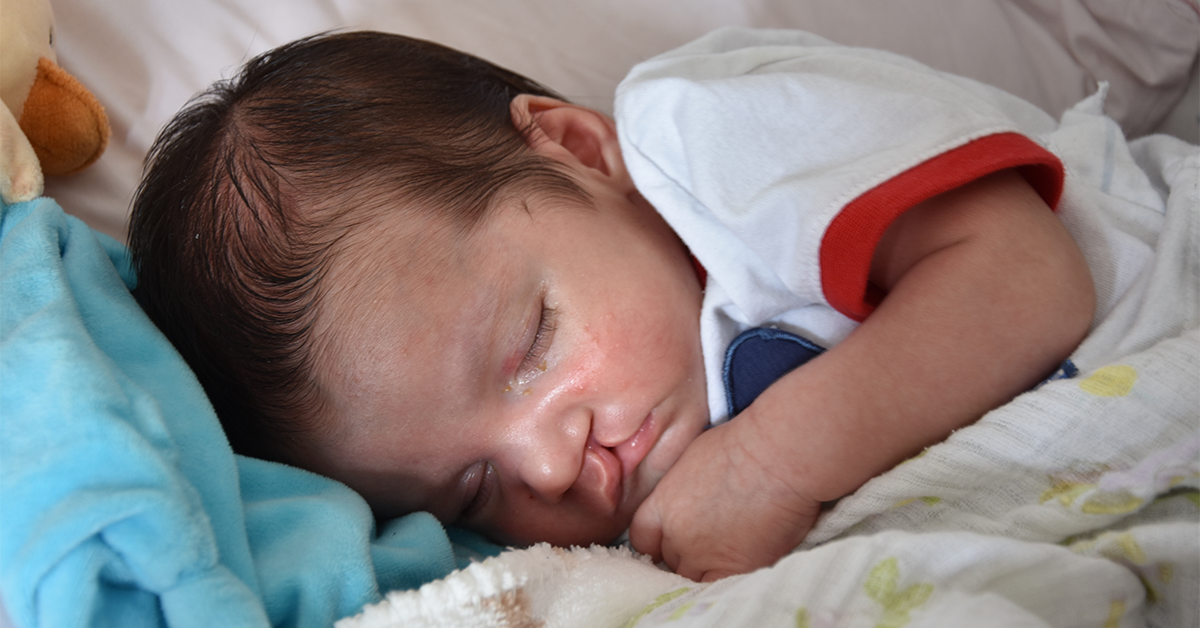Cleft and craniofacial disorders are a diverse group of deformities affecting the face and skull. These disorders are typically present at birth and can range from mild to severe. They can impact your child’s appearance and impede critical functions such as eating and breathing. In the US, approximately 600,000 children have been diagnosed with a cleft or other craniofacial disorder.
In observance of National Cleft and Craniofacial Awareness and Prevention Month, let’s discuss some of the more common disorders in greater detail.
Cleft lip and cleft palate are the most common of the cleft and craniofacial disorders. They occur when a baby’s lip or palate doesn’t form properly during pregnancy. About 1 in every 2,800 babies born in the US has a cleft lip; about 1 in every 1,700 babies is born with a cleft palate, and about 1 in every 1,600 babies is born with a cleft lip and cleft palate.
A cleft lip is a separation of the two sides of the lip. The lips form between the fourth and seventh weeks of pregnancy. A cleft occurs if the tissue forming the lip does not fuse completely during fetal development. The result is an opening in the upper lip, which can range from a small slit to a large gap that goes through the lip into the nose.
The palate, or roof of the mouth, forms between the sixth and ninth weeks of pregnancy. A cleft palate results if the tissue that makes up the palate doesn’t join together completely. In some cases, both the front of the mouth (hard palate) and the back part toward the throat (soft palate) are separated. In other cases, only one part of the palate is open.
Other cleft and craniofacial disorders include:
Hemifacial microsomia, also known as Goldenhar syndrome, is a condition in which the tissue on one side of the face is underdeveloped. This disorder typically affects the ear, mouth and jaw. In some cases, both sides of the face are affected. Hemifacial microsomia is the second most common cleft and craniofacial disorder behind cleft lip and cleft palate. It affects 1 in every 3,500 to 4,000 births.
Craniosynostosis is a disorder in which the natural sutures (soft spots) between a infant’s skull bones that enable the skull to expand as your child grows fuse before growth is complete. The result is a skull that’s abnormally shaped and pressure on a growing brain that can lead to developmental delays and learning problems. A baby’s facial bones may also be altered, creating an asymmetrical appearance.
Deformational, or positional, plagiocephaly is a change in head shape due to external pressure on the skull. It can develop if a baby sleeps in the same position most of the time or if problems with the baby’s neck muscles create a preference to turn the head in the same direction.
A vascular malformation is a birthmark or growth composed of blood vessels that can cause functional or aesthetic problems. There are several types of vascular malformations, which are named according to the blood vessel affected. Many of these malformations are apparent at birth. However, some aren’t found until the child is older, sometimes by the teenage years.
Symptoms of cleft and craniofacial disorders vary depending on the disorder and its severity. In general, these disorders are associated with head deformities and difficulties with speech, breathing, hearing and vision. Often, children with these disorders have dental problems and poor self-esteem.
Most medical professionals believe multiple factors combine to cause cleft and craniofacial disorders. Genetics is one factor. An affected child may have received a particular gene or combination of genes from one or both parents.
Environment is another factor. Women who take certain medications, have diabetes, smoke or drink alcohol in excess while pregnant are at a higher risk for having a baby with a cleft or other craniofacial disorder.
Studies have shown that women who don’t get enough folic acid during pregnancy may also be at a higher risk for having a baby with a cleft or other type of craniofacial disorder. Folic acid is a B vitamin found in leafy green vegetables, orange juice, fortified breakfast cereals and enriched grain products.
A cleft or other craniofacial disorder is usually diagnosed within the first few months of life. Many of the disorders, such as cleft lip and hemifacial microsomia, are obvious when looking at the baby. The child’s doctor may use dental or skull x-rays or a CT or MRI scan to aid in the diagnosis. Sometimes, these deformities can be diagnosed before birth using prenatal ultrasound.
Depending on the type and severity of the cleft or other craniofacial disorder, reconstructive surgery may be recommended to improve the child’s physical appearance. Surgery also helps with eating, breathing and speaking, as well as dental problems.
Children born with these disorders often require specialized health care from infancy to young adulthood.
Some research studies suggest that taking folic acid while pregnant may decrease the chances of having a baby with a cleft or other craniofacial disorder. Folic acid can be found in most multivitamins and as a stand-alone supplement.





Leave a Reply